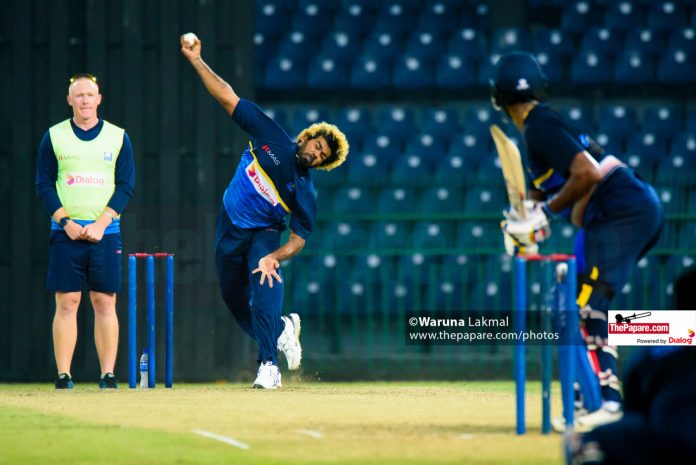The International Cricket Council has issued comprehensive guidelines aimed at the resumption of cricket at all levels – community, domestic and international – around the world as various governments have started to relax the restrictions imposed due to the spread of the coronavirus pandemic.
The comprehensive document – ICC Back to Cricket Guidelines – has been developed by ICC’s Medical Advisory Committee in consultation with Member Medical Representatives, with an aim to provide guidance for the safe resumption of the sport. In order to achieve that, key observations and recommendations have been made for how teams around the world should deal with the prospects of return to training, playing and traveling again.
New Cricket Ground proposal suspended after players’ meeting with PM
Key among the finely-detailed guidelines, is the recommendation of the appointment of a chief medical or a bio-safety officer to ensure all the respective government guidelines are followed as players return to training. The apex body has also asked for a consideration of a pre-match isolation training camp that will involve temperature checks and Covid-19 testing at least 14 days prior to travel. Additionally, there are calls for formulation of an adequate testing plan during practice and match situation.
Next up on ICC’s agenda for the respective boards is the need to provide a safe workplace for the cricketers, which entails risk assessment of training and match venues. There are also calls for maintaining a 1.5 metre distance (or as indicated by the respective governments) between players at all times, and thorough sanitation of personal equipment. As mentioned in the ECB’s recently-released guidelines, ICC wants players to arrive at grounds ‘ready to train’, and not use common facilities like showers and changing rooms.
With respect to match situation, the need for medical resources at every venue, the appointment of on-call doctors and sufficient medical support have to be considered. The ICC believes that the ball is a ‘transmission medium’ of the virus, and have recommended providing players with a clear guidance into the safe management of the ball, which includes a) regular hand sanitising when in contact with the ball b) players to not touch their eyes, nose and mouth after making contact with the ball and c) the umpires to consider wearing gloves when handling the ball. They also reiterated their recent prohibition on the use of saliva to shine the ball
SLC to support schools cricket coaches
There should also be social distancing protocols in place, which requires players to not hand over caps, towels, jumpers etc to the umpires between overs, and there to be no unneccessary body contact between the players. The ICC has also discouraged sharing of cricketing equipment and vouched for minimal use of communal facilities before and after a match.
There are also very strict rules set out for travel, which will first need the adherence of the guidelines set by respective governments. Furthermore, the ICC has called for the use of chartered flights, adequate social distancing on the flight, and slotting dedicated floors for teams in hotel accommodations.
The four stages of return to training
Players’ return to training has been bracketed into four stages, with progression from one stage to another to be based on government regulation.
Stage 1 involves individual skill-based training, which England have already begun for their bowlers. Next stage should kick in with practice in small groups (of less than three players) while adhering to social distancing norms. Stage 3 can have a slightly bigger group of players and a coach (less than 10) while stage 4 will involve squad-based training while maintaining safe distance from each other.
Also, the load and intensity of training for the players should be progressive across the stages in order to avoid the risk of injuries.
Guidelines for bowlers
Considering they run the highest risk of getting injured if proper care is not taken in their return from a lengthy period of inactivity, specific guidelines for bowlers have been drawn up. These include the suggestions to the cricket boards to involve a larger squad, in order to achieve the demands of the sport once it resumes.
BCB President not convinced about Sri Lanka tour yet
There are also suggestions of format-specific training routine for the bowlers. As per the proposals, boards have been suggested to allow for a minimum of 5-6 weeks of training, with the last three weeks involving bowling at match intensity in order to facilitate a bowler’s return to T20Is. For ODIs, the minimum preparation period is of 6 weeks, and a similar phase of match intensity practice [3 weeks]. For Tests, the preparation period is two to three months (8 to 12 weeks), with the last 4-5 weeks involving bowling at full tilt.
Isolation for all, and no on-field celebrations?
The ICC has discouraged any kind of on-field celebrations like before, as it would lead to players coming into close contact with each other. The board has also said that if any player in a match shows symptoms of Covid-19, then every participant of that game will require tests and a period in isolation as they would’ve been in close proximity with the affected player, and could have contracted the virus.
The board also acknowledged that the members of the support staff and match officials run a higher risk of severe illness should they get the virus, because of being older individuals in the game and likelier to have medical conditions like diabetes, weak innate immunity, cardiac issues and kidney problems.
















